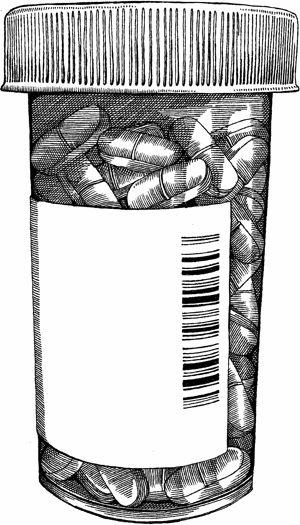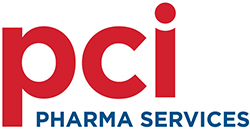Manufacturing Chemist recently spoke to PCI Pharma Services’ Allison Gilpin, Business Unit Manager, Global Serialisation, and Ray Hook, Manager, Global Serialisation Services, to discover more about easing the transition to serialisation and learn some lessons from a company that’s well ahead of the curve.
Despite facing a series of upcoming deadlines, many pharmaceutical companies are yet to adapt their supply chains to the incoming requirements. In June 2017, the US Food and Drug Administration (FDA) gave the pharmaceutical supply chain a further year to prepare for the DSCSA requirements, announcing a postponed deadline of November 2018 by when pharmaceutical manufacturers must include product identifiers on all prescription drug packages and cases.
The FDA announcement was widely anticipated and welcomed by key stakeholders across the pharmaceutical manufacturing sector as a necessary move for overall industry preparedness. Despite the postponed timeline, those trying to meet the deadline from a standing start will face acute challenges. The transition to the serialisation of products is logistically complicated during normal times. However, these are not normal times; equipment lead times are extending and competition for resources is intensifying.
Faced with this situation, there is much to be gained by looking to partners that have taken a very strategic approach to DCSCA readiness and managing the implementation of serialisation. PCI has been serialising commercial products for 5 years for American, European and emerging markets and, as such, offers significant experience and expertise in all aspects of serialisation.
According to PCI Pharma Services’ Allison Gilpin and Ray Hook, introducing serialisation across one of the largest packaging operations in the industry has been a challenging but highly beneficial experience. In this Q&A, they discuss the transition process, key learnings and how companies that still have work to do to meet the deadline can prepare.
MC: When did you first start the serialisation process and how has the transition gone?
Hook: In the transition from in-house to a scalable enterprise-level vendor solution, our first Antares-based serialisation line went live in 2014. In the last 3 years, we’ve gone from knowing the theory to becoming experts in serialisation.
Gilpin: It was a very big learning curve. There’s an incredible amount of information, knowledge and experience required. No matter how experienced people are, this is a completely different world.
MC: Can you give a sense of the scale of the serialisation transition?
Hook: Globally, PCI packages more than 8000 items. Most of those items that become serialised will effectively go through an entire launch process during the transition; artwork needs to be serialisation-ready with inventory management ensuring that non-serialised product goes out first.
Gilpin: It’s a huge amount of work and touches many functional departments. Effectively, whereas we’d been making 100,000 units of the same product in a batch, we are now making and tracking 100,000 unique items in that batch. Usual practice needs to be re-evaluated and thought about differently.
MC: How prepared is the industry?
Hook: A large proportion of the industry is not ready. Many companies are starting to place orders for equipment; however, from evaluation to putting the first line live, it’s a 12-month cycle. Lead times from equipment manufacturers are increasing significantly and already exceed 7 months. Industry polls taken indicate that at least 50% of businesses may not be ready.
Gilpin: The staffing side is also a complex challenge that requires a lot of resource. Many of our clients are relying heavily on consultant and contract resources to support their knowledge gap, but demand for those resources is also increasing exponentially.
MC: What are the consequences of failing to meet the deadline?
Hook: It will be illegal for non-serialised products to enter the supply chain once the deadline has passed, which could result in fines for non-compliance.
MC: What options are available to companies that are behind on preparations?
Hook: Customers can bring uncoded packages to PCI and we’ll run them through our Flexsuite, which is designed to receive cartons of a wide variety of sizes — from a matchbox to a shoebox. It serialises the carton, which is then aggregated to the case and the pallet.
MC: What is the purpose of aggregation?
Hook: Operationally, at the end of a packing run, a critical step is to understand where 100% of the serial numbers have gone — both viable numbers as well as those that were not used. So, conceptually, if you have a packaging run of, for example, 40,000 units, which is not atypical, then you have a responsibility to understand where every one of those 40,000 numbers have gone. And, if a few were missing, we would need to investigate.
Serialisation gives you that level of control and positive verification. By reading boxes at every stage of the packaging hierarchy, we know which cases are correctly built and can discount them as being the cause of the missing numbers. This process, known as aggregation, allows us to focus on the areas of the packaging suite that may have caused the issue.
Gilpin: The other significant benefit of aggregation is in the broader supply chain. With aggregation, you know specifically what is on each pallet and what is in each case from the electronic verification and parent-child data pairing. Without the benefit of electronic aggregation, the supply chain participants are left to “infer” what is contained on a pallet or a shipping case, which can be extremely problematic.
MC: What are the benefits of serialisation?
Hook: Primarily, serialisation provides control and positive verification. For example, when serialising, if a creased label gets put onto a case (meaning the barcode is unreadable and the case is rejected), the contents of the case become available for repacking; previously, anything that came off the line was rejected and repacked to reduce waste and time. Serialisation also supports automation and increases quality standards; at the front end of the line, software has replaced the manual entry of lot numbers and expiry dates. Similar benefits are realised by deploying cameras at the back end; cameras keep count, so there’s no need to weigh a case to check the contents.
MC: How are post-packaging modifications for sampling, damage and rework handled?
Hook: Our Antares platform supports post-production interference with serialised material after packaging for situations such as sampling, damage or rework. If a customer requests ten additional samples after a batch has been completed and closed, we can open a pallet, take ten units out of a case, reseal the case with a new partial case label and reseal the pallet with a new quantity, all while amending the aggregation data set within the warehouse. The same system handles damaged products and ensures that pallet-level and aggregation hierarchy data sent to customers is accurate.

A multifaceted approach is necessary because serialisation alone cannot stop counterfeiting
MC: What effect has serialisation had on overall equipment effectiveness and productivity?
Hook: Early evidence suggested a negative impact on productivity; now, however, with experience, we’re not seeing a great downturn in the productivity of a line and, in some instances, we’re actually seeing improved control and efficiency.
MC: How do the incoming US requirements differ from those adopted in the European Union?
Hook: The US uses a true track-and-trace system with products being verified at each step in the supply chain. This enables the US to address counterfeiting and help FDA to eliminate bad actors from the supply chain.
Gilpin: In Europe, with the Falsified Medicines Directive (FMD), the process is very different. The manufacturer tells a European government the serial numbers they’re entering and not a distribution centre. The next normal verification step is when a pharmacist is about to hand a pack to a patient. Other than some relatively low level special auditing, there are no checks throughout the supply chain. Instead, Europe is mandating the use of tamper-evident technology on serialised packaging. These technologies, which destroy packs that are opened illegally, substitute for the step-by-step verification of the US approach.
MC: What other approaches are companies using to prevent counterfeiting?
Hook: Layering anticounterfeiting technology is popular, particularly in Europe. Companies are adding features such as photoreactive elements to packaging so they can verify product authenticity by exposing it to light of a particular wavelength … or add microcode or intentional design defects that a counterfeiter may overlook.
Gilpin: A multifaceted approach is necessary because serialisation alone cannot stop counterfeiting. Layered technologies and a rotational approach to their strategy, paired with effective serialisation, significantly increases the chances of mitigating counterfeiting and diversion activity.





